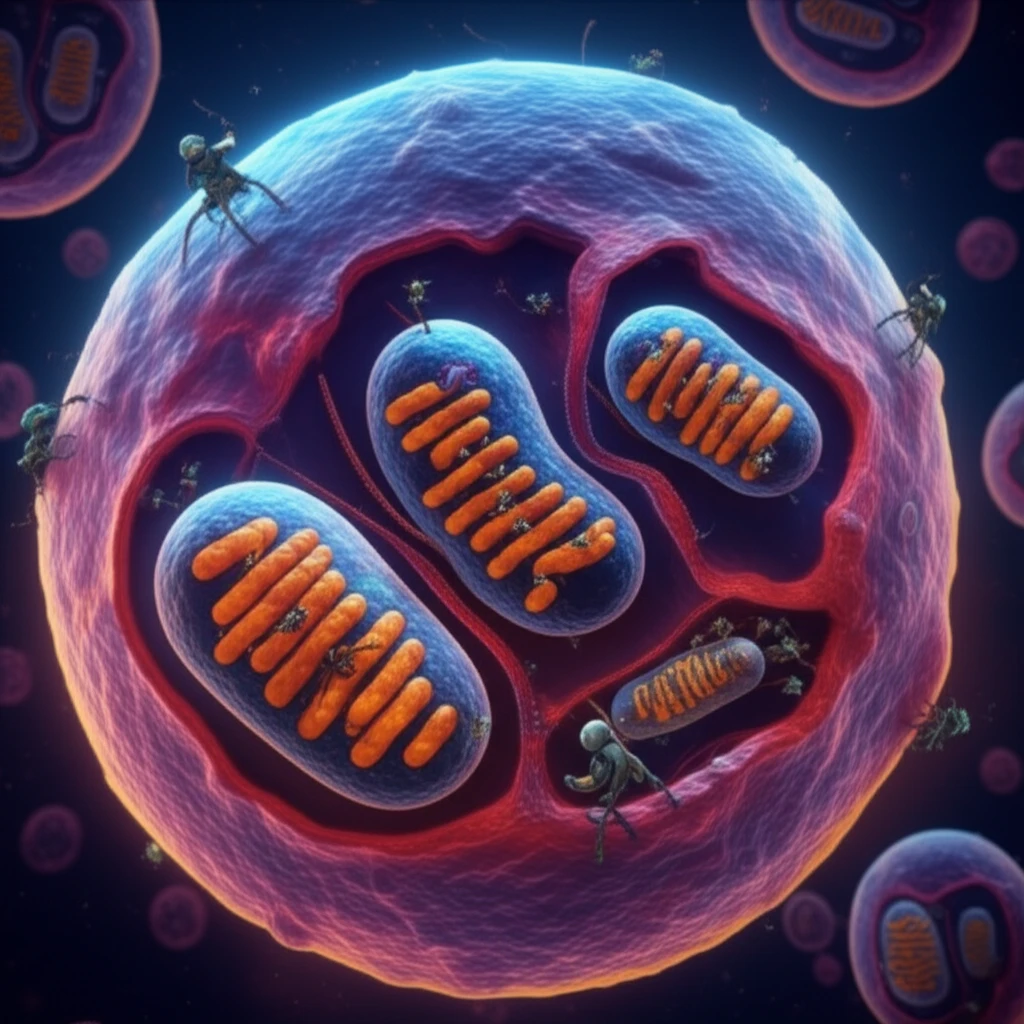
Mitochondria's Lost & Found: How Protein Transport Machines Evolved
"Tracing the evolutionary journey of mitochondrial protein transport, revealing surprising losses and adaptations in bacteria-inspired machinery."
Mitochondria, those tiny power plants within our cells, have a fascinating history. Once free-living bacteria, they were incorporated into eukaryotic cells in a process called endosymbiosis. This transformation required a complete overhaul of their protein management system, including how proteins are transported across their membranes.
Bacteria rely on translocases, specialized machines that shuttle proteins across or insert them into their inner and outer membranes. Mitochondria have retained some of these bacterial-derived translocases but have discarded others during evolution. The inner membrane TAT (twin-arginine translocation) translocase, responsible for transporting folded proteins, has seen a sporadic retention across the eukaryote tree.
New research sheds light on the evolutionary path of mitochondrial TAT translocases, revealing how these protein transport machines have adapted—and sometimes disappeared—in mitochondria.
The Ups and Downs of TAT Translocases: An Evolutionary Tale

The study, published in BMC Biology, delves into the distribution and function of mitochondrial TAT subunits across various eukaryotic lineages. Researchers identified three distinct types of TatABC-derived machineries encoded by eukaryotes: TatAC, TatBC, and TatC-only. The focus here is on TatAC and TatC-only machineries, which haven't been extensively studied before.
- Mitochondria inherited three inner membrane translocases: Sec, TAT, and Oxa1 (YidC) from their bacterial ancestor.
- Mitochondrial TAT has likely retained its unique function of transporting folded proteins, at least in some eukaryotes.
- Mitochondria have abandoned the TAT machinery multiple times during evolution, unlike chloroplasts.
- Oxa1 translocase was nearly universally retained in mitochondrial biogenesis pathways.
What Does This Mean for Understanding Cellular Evolution?
This research highlights the dynamic nature of mitochondrial evolution. At their origin, mitochondria inherited three key protein transport systems from their bacterial ancestors. However, over eons, some of these systems were lost or adapted, revealing the selective pressures that shaped these organelles.
The sporadic retention of the TAT translocase, particularly its unique ability to transport folded proteins, emphasizes its specialized function in certain eukaryotes. The abandonment of this machinery in many mitochondria, contrasted with its successful transfer in chloroplasts, underscores the diverse evolutionary paths taken by these organelles.
Understanding the evolution of these protein transport pathways provides crucial insights into the intricate processes that govern cellular function and the remarkable adaptability of life.
